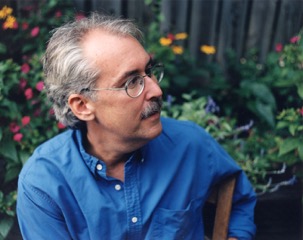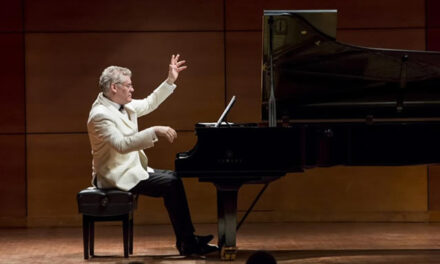Joseph L. Robinson (b.1940), Long Winded; An Oboist’s Incredible Journey to the New York Philharmonic, Chicago: Joshua Tree Publishing, © 2018, Pp. 360, hardcover: ISBN 978-1-941049-53-2, $32.95; paperback: ISBN 978-1941049549, $21.95; available via Amazon.com. (Author’s Limited Edition Copy & Bonus CD: Email Joseph Robinson directly to buy a signed hard-cover Author’s Limited Edition for $40. Please share how many copies you’d like and how you’d like the book(s) signed. Included with each Author’s Limited Edition is a special CD of Joseph Robinson’s playing with the Bellingham Festival of Music.)
Robinson, aka for many years “Oboe Joe,” did not follow the standard path to arrive at his ultimate position as principal oboist of the NY Phil, arguably the top position of its kind, nor did he get there directly, but end up there he did, for some 27 years. He was born in Lenoir, NC, and educated in its public schools – its HS band was one of the first in the state (p. 26); the HS, thanks to an endowment, had a good music program with good teachers. He started with a saxophone, but upon first hearing an oboe, became enraptured with its sound (p. 25), and switched (p. 27).
He had numerous other skills and talents, including drawing and frisbee, that he also developed and pursued with considerable success, even into adulthood; he describes himself as a “mongrel” (p. 356). His father was concerned about a future in music alone, but in 1957 he was offered a scholarship to the College-Conservatory of Music in Cincinnati, OH’s, six-week summer band and orchestra camp. This pretty much sealed his interest in a career in those ensemble realms rather than a flashy, jet-setting soloist one; Philadelphia-based woodwind instrument repairer and specialist Hans Moennig said he was too smart to play the oboe (p. 79). It also set him out on his lifelong stream of luck of meeting the right person at the right time that, in spite of occasional failures, always ended up being for the best, for the rest of his life.
After graduating from HS in 1958, he went to the Transylvania Music Camp in Brevard, NC (today the Brevard Summer Music Institute), and entered Davidson College that fall, sticking with the liberal arts rather than the music-only path, which he would continue to do throughout his life; it set him apart from other conservatory-trained oboists, and sets this memoir apart as well. His first term paper at Davidson “[…] elucidated the Romantic similarities of Lord Byron’s “Don Juan” and Hector Berlioz’s “Harold in Italy.” (p. 88). After his first year there, he went to Tanglewood, in Lenox, MA, where he met Ralph Gomberg, then principal oboist with the Boston Symphony (His older brother, Harold, was then principal with the NY Phil; both had been students of Marcel Tabuteau, former principal oboist of the Philadelphia Orchestra, whom Joe would meet a few years later.). He returned to Brevard in the summers of 1960 and 1961.
He learned early the importance for playing an oboe of its reed and had the good luck of having access to ones made by famous oboist John Mack – he took some with him to Tanglewood, where he worked with Mack, whom he’d met in Winston-Salem just prior to heading to Western Mass; Mack, impressed with his skills and talent, became a close friend for the rest of his life. Only then did he learn (which the reader may well not know) that most oboists cut and shape their own reeds from certain types of grass. (Bamboo* is a grass, so don’t let that term mislead you; it’s not what grows in your front lawn.) It took him many years to learn how to make them from scratch. Upon graduation, cum laude, from Davidson, in May 1962 (after which John Mack showed up at his door to play golf with him), he profited from a Fulbright scholarship to Cologne, Germany, which he turned into a year in Europe; so much traveling did he do, into which he seems to have crammed a lifetime, continuing to meet more and more luminaries, including, at its end, Tabuteau, in Nice, where he was also able to be an interloper as a German exchange student at the International Summer Academy, where he learned about Sculpting Tone, Inflection, Color, Melodic Intervals, Articulation, and more types of grass from which reeds could be made – and how to make them – from the “Master,” with whom he became close. Who could have been more privileged?
He entered the Master’s Program at the University of Maryland in College Park, in 1963 – a new department then. But he was disappointed in it and turned in a different direction to apply for a two-year social science fellowship at the Woodrow Wilson School of Public and International Affairs at Princeton. He returned to Brevard for the summer of 1964 before heading to NJ, where he indulged his belief that the arts should be at the center, not at the fringe, of culture and society, and got involved in an effort to bring them to the five nations of Central America, which were reorganizing their governments after their democratic/independence movements. He created a summer scholarship program for youth from there at Brevard in 1966. He followed these endeavors with positions as principal oboist at the Mobile, AL, Symphony (1966-67), and then with the Atlanta Symphony (1967-73). He also auditioned for some other such positions along the way that were not offered to him. He returned to the U of MD as professor of oboe (1973-74) but moved to the NC School of the Arts in Winston-Salem (1974-77), where he was also a member of the Clarion Wind Quintet. The narrative ends with his appointment to the NY Phil in 1978.
The text is chock-a-block full of details, facts, history (including a capsule one of the UNCSA, pp. 310-315, with its ‘mission statement,’ p. 311), and information, broken into only six chapters, entitled with tempo terms, only the last two of which are what might be considered “standard” lengths – the first is 100 pages long, which gives an added meaning to “long winded” – but it reads easily and smoothly, because it is broken down into “chewable/digestible” topic-identified sections, and is tinged with humor, peppered with parenthetical explanations, and plentiful in analogies, making it easy to follow and understand. I found it very difficult to put down, reading it within about 3.5 days, and it rang true for me because I’m of the same vintage: b. 1941, same years for completion of HS and college, so it was like reading the story of the times of my own life, even if I was in a different state and a different, considerably lower socio-economic class. It also covers oboe-specific subjects, such as the making of (pp. 138-140) and playing of (pp. 154-75) them, both technical, but readily understandable by the layman. It is also well illustrated, with plentiful appropriate b&w photos, reproductions of articles, programs, and texts, – and drawings by Joe.
It is one of the most engaging and fascinating memoirs I’ve ever read, so I highly recommend you read it, too, and hope you’re as enthralled as I was.
*The author writes: It is arundo donax, the largest species of grass, which grows in semi-tropical areas everywhere, perhaps most importantly in the Var region of southeastern France. Annual harvests of arundo donax are to oboe reeds what annual crops of grapes are to wine! The search for good cane is relentless.












